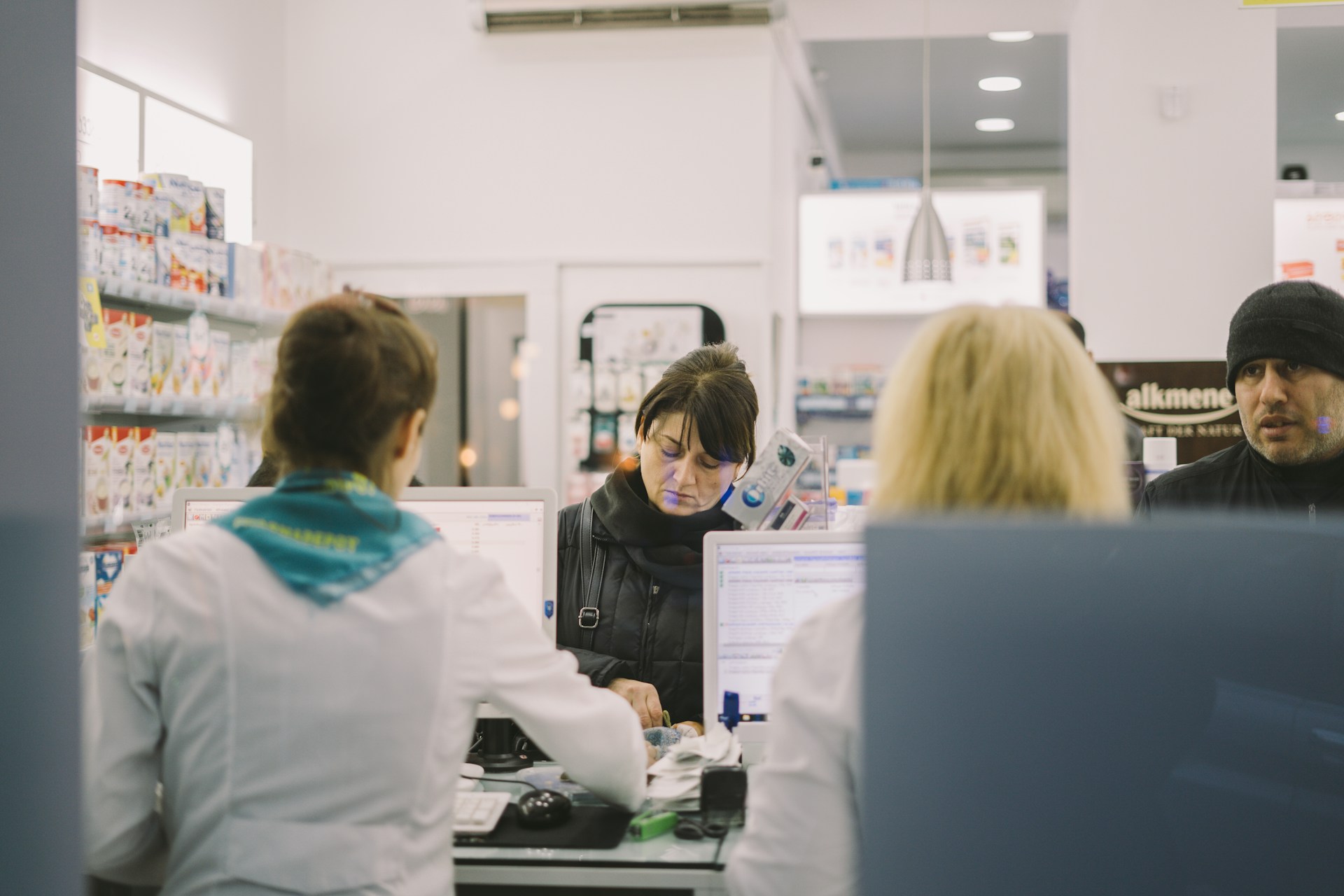
We’ve all been there: sitting in a long queue at the hospital pharmacy, feeling unwell and yearning for a quicker way to get the medication you need. For busy hospitals, overflowing waiting rooms are a common sight, placing a strain on both patients and pharmacists. The COVID-19 pandemic has further amplified these challenges, highlighting the need for innovative solutions to streamline medication access.
Research: Understanding the Pharmacy Environment
Activities: We analyzed the core activities within the pharmacy, including dispensing medications, verifying prescriptions, and answering patient questions about medications and potential side effects.
Behavior Observation: Observing real-world behaviors within the pharmacy is vital. How do patients currently interact with pharmacists? What communication challenges arise, especially with non-native speakers struggling to understand medication instructions?
Pain Points: Identifying the frustrations experienced by both patients and pharmacists is crucial. Long waits, medication stock-outs, and communication difficulties regarding prescriptions are common frustrations we focus on.
Ideation & Solution Development: Empowering Patients, Optimizing Care
Our goal is to design a solution that empowers patients to take charge of their medication needs, while alleviating the burden on pharmacists. Here’s how we envision achieving this:
Standardized Digital Prescriptions: Advocate for standardized digital prescriptions to replace error-prone paper ones. These digital prescriptions, integrated with our solution, would provide clear instructions, dosage information, and potential drug interactions, enhancing medication safety and reducing misunderstandings.
Encouraging Self-Service: The transition to digital prescriptions opens the door for self-service solutions. By providing clear instructions and user-friendly interfaces, we can empower patients to safely and efficiently access their medications without lengthy waits.

The Solution: The Medicine Vending Machine
Building upon the research and the need for self-service, we propose the Medicine Vending Machine. Here’s how this solution tackles the challenges in hospital pharmacies:
QR Code Prescription Validation: Patients will scan a QR code on their digital prescription using the machine’s built-in scanner. This code will securely access their medication details and validate the order, ensuring they receive the correct medication.
Extensive Inventory: The machine will have a large, customizable storage capacity, holding up to 80 commonly prescribed medications. This ensures a wide range of medications are readily available to patients, reducing the need for them to wait for refills.
Intuitive Touchscreen Interface: A user-friendly touchscreen interface will guide patients through the selection and dispensing process.
AI-powered Medicine Validation: The medicine vending machine can incorporate an AI-powered medicine validation module. This module would cross-check the dispensed medication against the patient’s digital prescription, further reducing the risk of errors.
Remote Dispensing Capability: For medications requiring pharmacist oversight or specialized dispensing procedures, the machine can integrate with a remote dispensing system. This system would allow a pharmacist to remotely verify and dispense the medication via a secure video connection.
Multiple Payment Options: The machine can offer a variety of payment options, including cash, credit cards, and mobile wallets/UPI, catering to diverse patient preferences.





